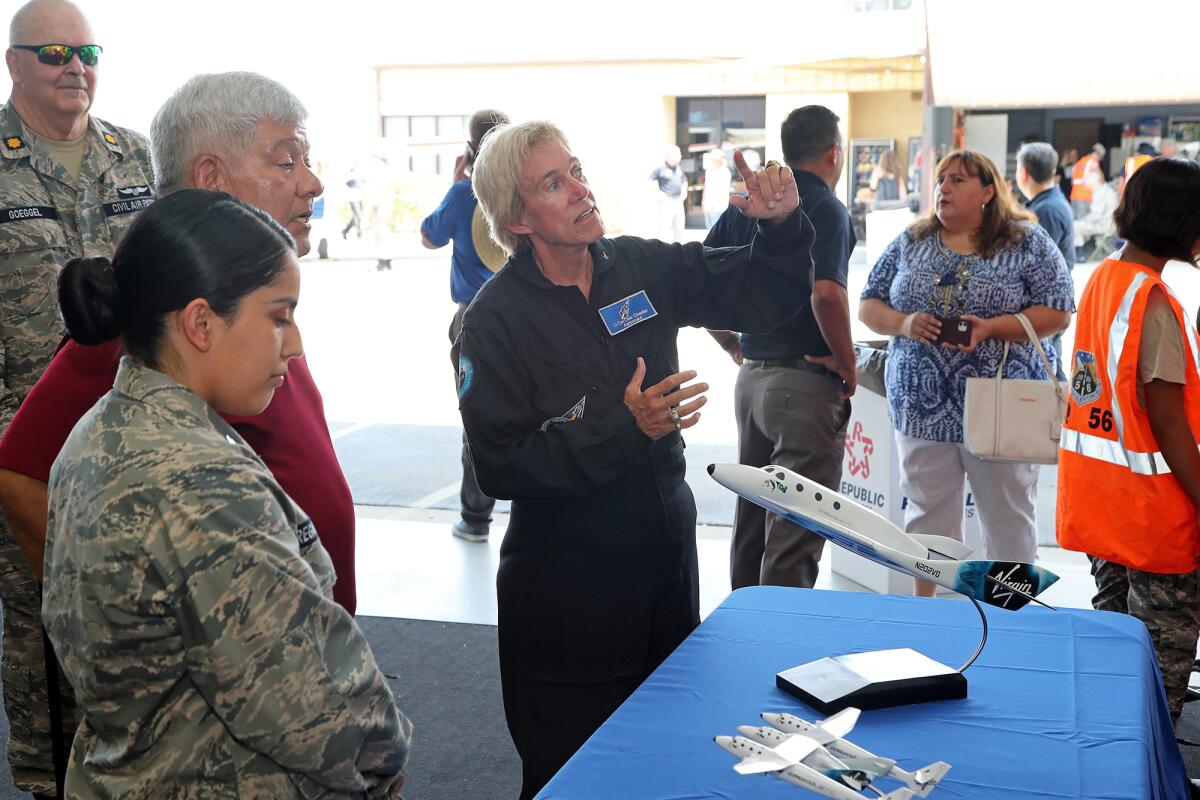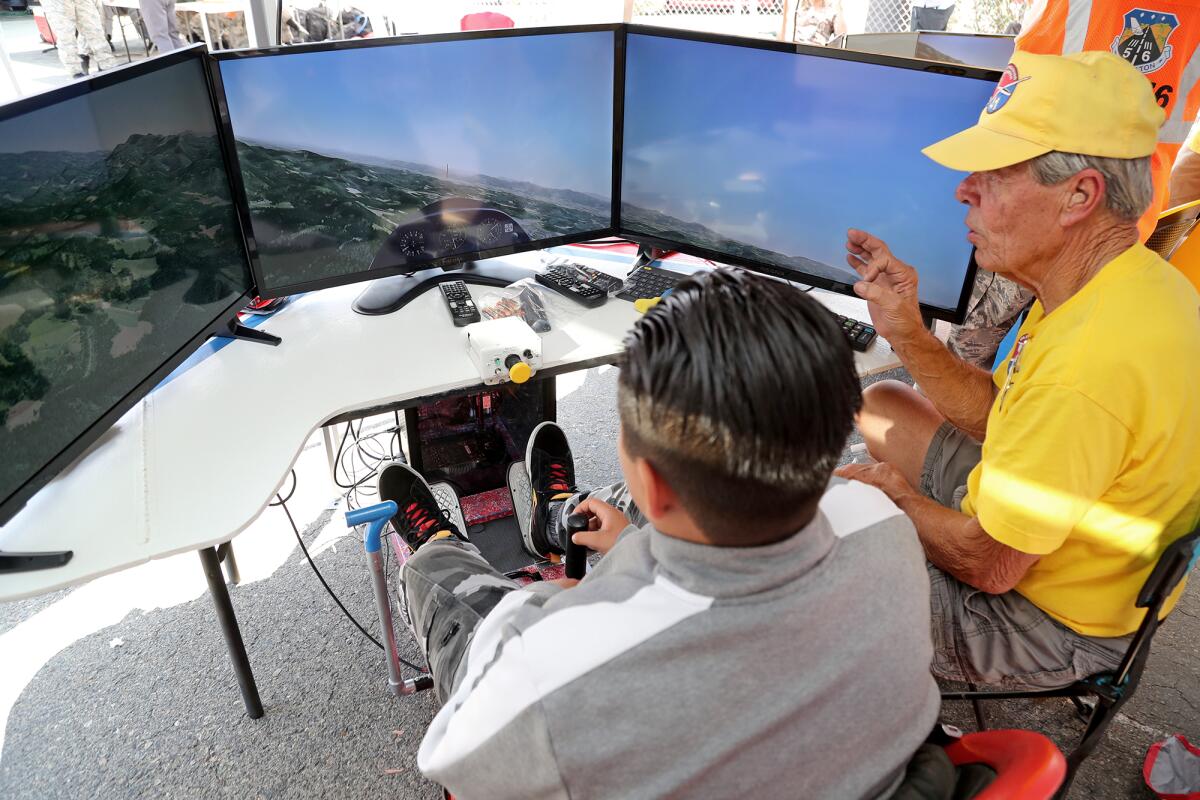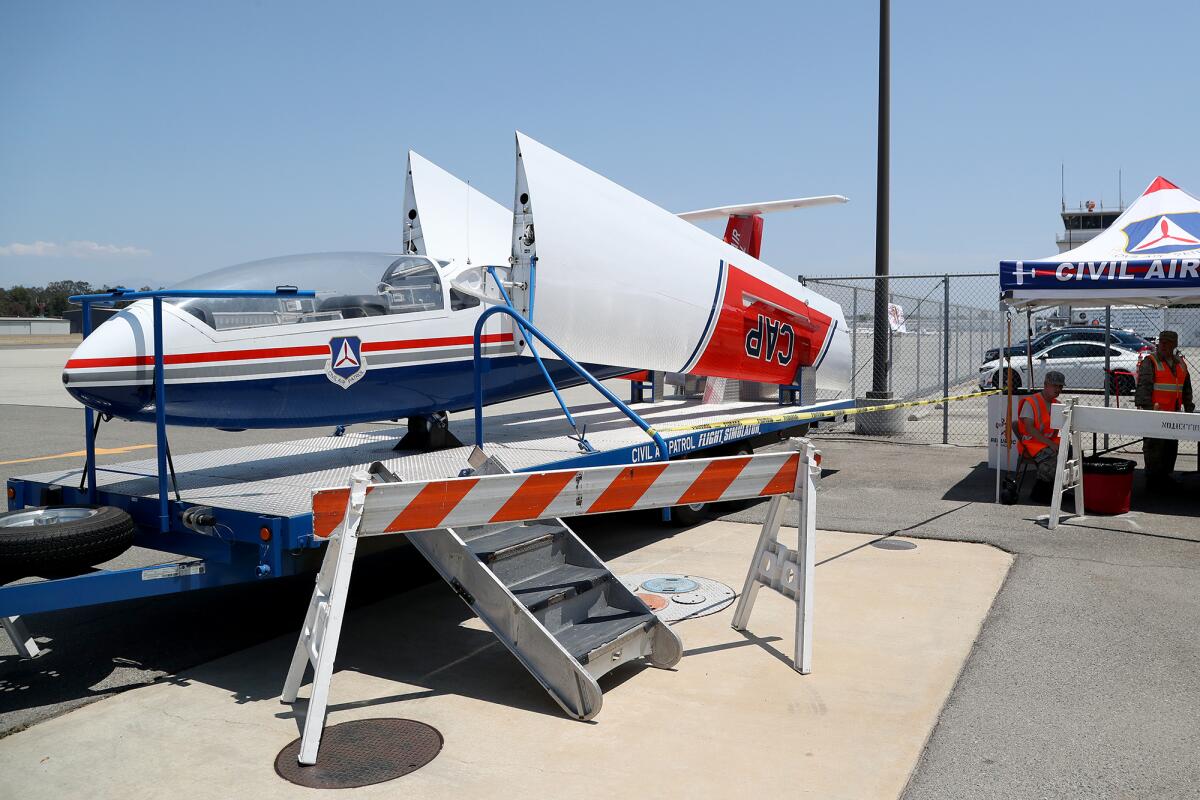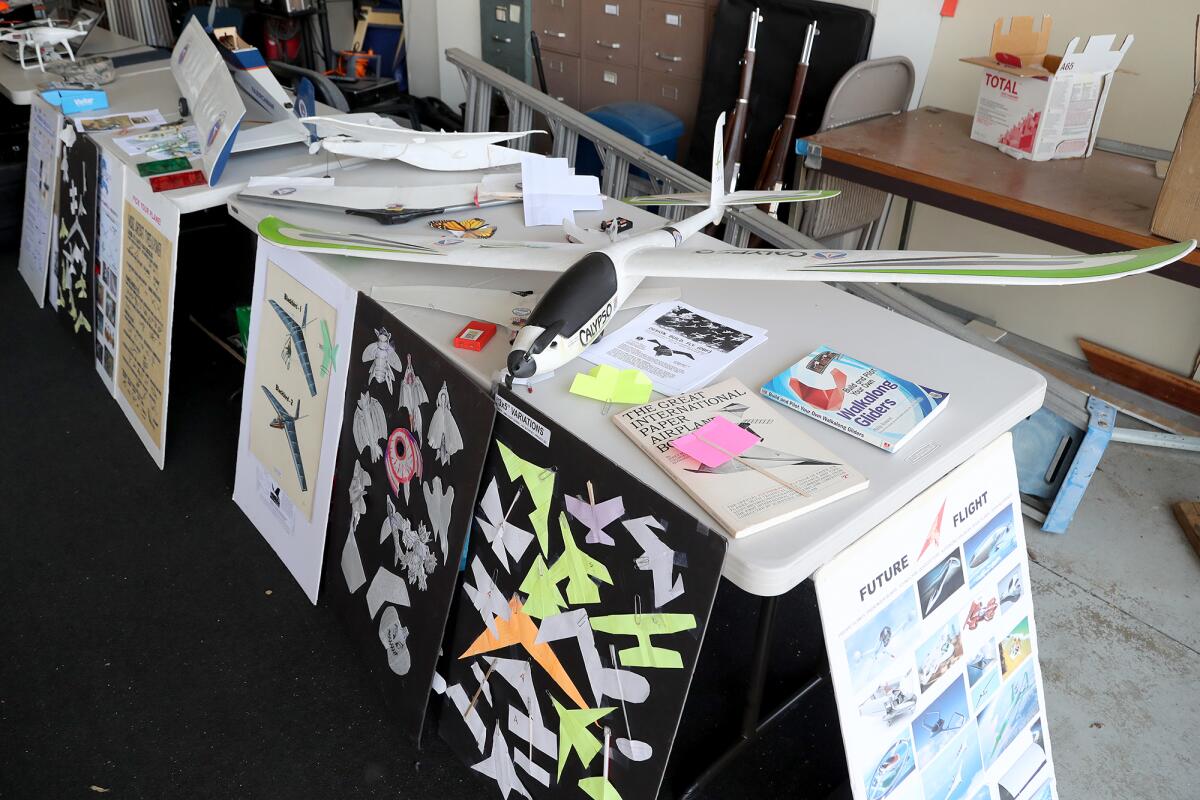Civil Air Patrol remobilizes at Fullerton Airport after partial stand-down for COVID-19

- Share via
Civil Air Patrol squadrons at Fullerton Airport celebrated their remobilization on July 17 after being partially shuttered for more than a year under a nationwide stand-down order.
This year, the 60,000-member nonprofit organization is celebrating its 80th anniversary serving as the civilian auxiliary of the U.S. Air Force.
During the pandemic, Fullerton-based squadrons continued emergency services on behalf of federal, state, and county agencies. Civil Air Patrol flight crews have piloted a Cessna 172 single-engine plane to search for downed aviators, said Maj. Jeff Goeggel, public affairs officer for Fullerton Composite Squadron 56. They’ve also flown photographers for over neighborhoods that burned down in a Northern California wildfire and acted as lost pilots intercepted by U.S. Air Force fighter pilots during training exercises.

In the recent past, Civil Air Patrol aviators have also flown DEA agents looking for drug traffickers on the U.S.-Mexico border. The Orange County Sheriff’s Department has requested Civil Air Patrol’s help with searching for hikers lost in the backcountry, Goeggel said.
In addition to these emergency services, the local squadrons run Civil Air Patrol’s cadet program for youths aged 12 to 18. Similar to the Reserve Officer Training Corps at colleges and universities, the 63 cadets currently on the roster wear uniforms, endure physical training, and work within a chain of command. Mentor pilot-led orientation flights also offer cadets time at the controls of propeller-driven and glider aircraft.
During the COVID-19 restrictions, cadets were largely restricted to classroom-based learning held via Microsoft Teams.
“We actually were kind of concerned we would see an increase in the number of cadets who would decide to leave Civil Air Patrol, or even officers — that interestingly never happened,” Goeggel said.

Senior cadet Jesse James, 15, of Fullerton joined Civil Air Patrol just after his 12th birthday with his dad’s encouragement after they met members at Fullerton Airport Day. The Troy High School student stuck with the program after befriending an older cadet who is now in the U.S. Air Force, adding “he represented everything that I wanted to be as a leader.”
COVID-19 forced squadrons to push their evening cadet meetings online for many months. In May, they started some hybrid sessions that allowed some cadets to meet in person.
“It was a little sad because I love the program I’m in,” Jesse said. “They’re great people, great cadets. Not being able to be around them was unfortunate.”
Civil Air Patrol’s CyberPatriot, a national youth cybersecurity education program, has sent Jesse to national competitions where teams of cadets attempt to defend a Cisco network from a simulated hacker attack. His long-term goal is to apply to the U.S. Military Academy and pursue an Army cybersecurity career.
“One of the things in Civil Air Patrol is we’re not pressuring cadets to join the military, we just use military practices to instill a sense of confidence and leadership,” Jesse said. “Transformational leadership is something that has really stuck with me through the program and signifies what we do in Civil Air Patrol.”
Those cadets who decide to move onto the service academies or enlist in the Air Force find they are better prepared for the physical and psychological challenges of boot camp, Goeggel said.

Maj. Richard Benson, commander of Squadron 56 at Fullerton Airport, noticed a marked difference in cadets’ enthusiasm and attitude now that they’re able to do things in person.
“There’s something about watching a cadet come in very introverted and blossom into a cadet who is able to stand in front of a group and speak with confidence,” Benson said.
Benson was introduced to Civil Air Patrol by his son, who pursued an interest in aviation with the organization as a teenager. Benson and his wife, Maj. Shaleana Benson, were impressed with the leadership skills gained by forcing cadets to teach each other, rather than the parent-led instruction they saw in Boy Scout troops. Years later, the couple both hold leadership roles in their squadron.
Watching cadets get excited at the aircraft’s controls during orientation flights, also called O-Rides, is particularly rewarding to watch, Maj. Richard Benson said.
“The purpose of O-Rides is to get them familiar with flying and hopefully spark the interest in flying that they wouldn’t have,” he said.
All the latest on Orange County from Orange County.
Get our free TimesOC newsletter.
You may occasionally receive promotional content from the Daily Pilot.




